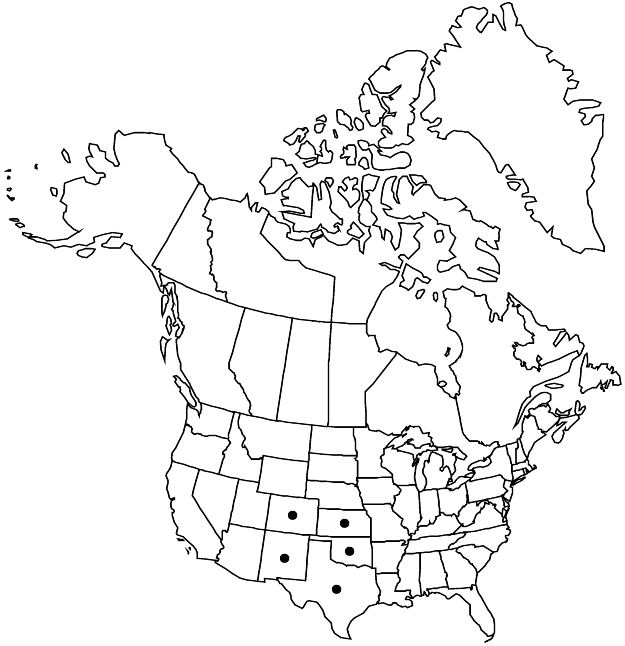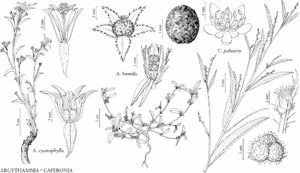Argythamnia humilis
Linnaea 34: 147. 1865. (as Argyrothamnia)
Herbs, perennial, usually monoecious, rarely dioecious, to 3 dm. Stems erect or prostrate, hairy or glabrous, hairs not silvery, malpighiaceous. Leaves: stipules persistent, ovate to lanceolate, 0.3–1.4 mm, margins not glandular; petiole 2–10 mm; blade obovate to linear, 0.5–7 × 0.2–2.2 cm, margins entire, sometimes slightly revolute, without glands, surfaces hairy or glabrous, hairs not silvery, malpighiaceous. Inflorescences bisexual, rarely unisexual (staminate), 0.7–0.9 cm; bracts ovate to lanceolate, 0.8–2.5 mm, margins without glands. Flowers without pink dye when wetted. Staminate flowers: sepals lanceolate, 2.4–3.3 × 0.3–0.8 mm; petals elliptic, 1.5–2.6 × 0.4–0.8 mm, free from androphore; nectary glands ovate to linear, 0.4–0.8 × 0.2–0.3 mm, adnate to or free from androphore, glabrous, rarely pubescent; stamens (7–)10, staminodes 2–3, glabrous. Pistillate flowers: sepals elliptic, 4–5.2 × 0.9–2.5 mm, without glands, petals 5, elliptic to filiform, 0.3–1.7 × 0.3–0.4 mm; nectary glands linear to oblong, 0.3–1.5 × 0.1–0.4 mm, glabrous; ovary hispidulous, strigillose, or glabrous; styles 0.6–1.3 mm, glabrous; stigmas flattened. Capsules 1.6–4.2 mm, hispidulous, strigillose, or glabrous. Seeds 1.5–2.5 mm, smooth or rugose-roughened to papillate.
Phenology: Flowering year-round.
Habitat: Pine-oak forests, desert scrub, grasslands, limestone, sandstone, and clay soils.
Elevation: 0–1600 m.
Distribution

Colo., Kans., N.Mex., Okla., Tex., Mexico (Chihuahua, Coahuila, Nuevo León, Tamaulipas).
Discussion
Glabrous plants have been recognized as Argythamnia laevis (and other combinations of Aphora laevis at different taxonomic ranks). B. L. Turner (2001b) studied this variation and concluded that the glabrous plants do not form distinct populations but instead are individuals in otherwise pubescent populations. Argythamnia humilis var. leiosperma was distinguished by possessing smooth seeds, in contrast to the markedly rugose-roughened seeds of var. humilis. When he described the variety, Waterfall mentioned that var. leiosperma is found in populations of western Oklahoma (Cimarron County) and central Texas (Brown and Hamilton counties). However, this taxon has not been recognized in recent treatments of the plants of Texas (G. M. Diggs et al. 1999; Turner et al. 2003) and Oklahoma (R. J. Tyrl et al. 2010) and is not accepted here.
Selected References
None.
